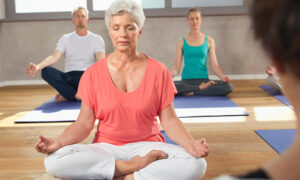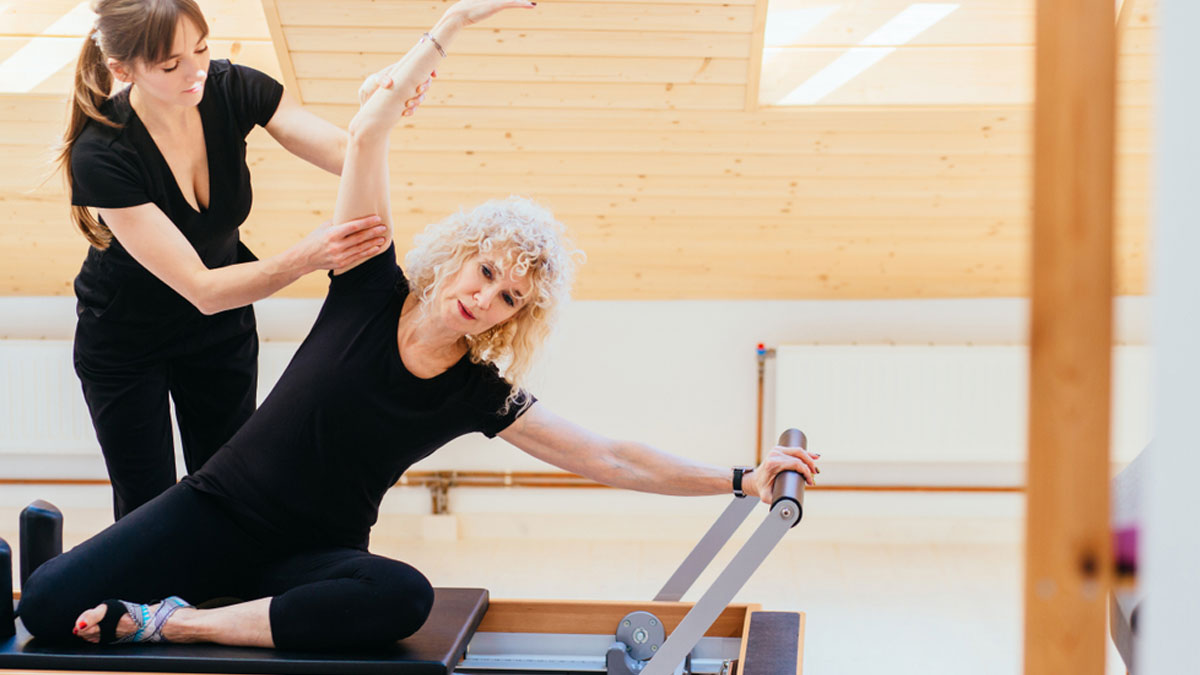Best Exercise for Seniors: Balance, Mobility, and Strength.
Exercise for Seniors, staying physically active provides many health benefits as you age. Regular exercise can help you maintain strength, flexibility, and balance. Fun exercises for seniors also help prevent falls.
At Pulse Fitn, we understand that age is just a number and the benefits of exercise are timeless. And we know that just because you’ve got more candles on your cake doesn’t mean you have less you want to accomplish. So, whether you’re already a seasoned fitness enthusiast or taking your first steps toward a healthier lifestyle, you’re in the right place to explore exercises that encourage balance, mobility, and strength for seniors.
You’re never too old to start exercising.
What are the Health Benefits of Exercise for Seniors?
Before we delve into the best exercises for seniors, let’s take a moment to appreciate the incredible benefits of staying active throughout your golden years. If you’ve maintained a workout routine, you’re familiar with the energy boost, dopamine hits, and those feel-good endorphins. The good news? These perks don’t diminish with age; they become even more precious.
- Reduced joint pain
- Strong bones and muscles
- Boosted brain health and cognitive function
- Reduced risk—or lessened symptoms—of chronic disease
- Better quality sleep
- Increased energy levels
- Improved mental health, mood, and quality of life
How often Should Seniors Exercise
Older adults aren’t off the hook regarding needed exercise. In fact, these years are some of the best times to reap the benefits of physical activity.
The CDC recommends that adults aged 65 and older aim for:
- At least 150 minutes a week (30 minutes a day, five days a week) of moderate-intensity activity such as brisk walking. Or 75 minutes a week of vigorous-intensity activity such as hiking, jogging, or running.
- At least two days a week of activities that strengthen muscles.
- Plus, activities to improve balance, such as standing on one foot, are incorporated into your daily routine.
Luckily, 150 minutes a week of cardio is easily accomplished—even enjoyable—if you set yourself up for success with an enjoyable exercise regimen.
What are the best types of Exercise for Seniors?
But first, let’s explore the best types of exercises for seniors, each tailored to promote specific aspects of physical well-being. Whether you’re seeking to enhance balance, build strength, enjoy low-impact routines, or engage in heart-healthy cardio, we’ve got you covered.
Low Impact
At this age, you want to retire the marathon shoes you pounded into the pavement (and wore out your knees in) and get a swimsuit you love. Low-impact activities are best for aging bodies, providing easy access to all the juicy benefits of working out without the risk of injury or joint pain. It’s time to explore low-impact activities such as swimming, cycling, or yoga—which also applies as a strength exercise since you’re supporting your own body weight and building both the body and bones.
Balance
Balance activities are crucial for adults 65 and older as balance naturally declines with age. Balance training includes walking heel-to-toe, practicing standing from sitting, and using a wobble board. The CDC recommends regular balance exercises three times a week to maintain balance over time and reduce the risk of falls. These kinds of activities improve the ability to resist forces within or outside of the body that cause falls. Fall prevention programs that include balance training and other exercises to improve activities of daily living significantly reduce the risk of injury, such as bone fractures, if a fall does occur.
Strength Training
Luckily, different types of activities often work together. For example, strengthening the back, abdomen, and leg muscles also improves balance. So when you strengthen certain muscles, your balance also improves.
Since most older adults aren’t itching to get into the weight room, muscle strength training for seniors can include bodyweight exercises and functional fitness routines, such as wall push-ups, calf raises, shoulder blade squeezes, and smaller repeated movements that can be accomplished without additional equipment.
Cardio
Exercise for Seniors, Swimming, short walks, pickleball, and cycling are all enjoyable, social, and—BONUS—low-impact ways to improve your cardiovascular health. With a fifteen-minute walk a few mornings a week, a game of pickleball on Wednesday afternoons, and a couple of water aerobics classes, you’ll hit that cardio goal in no time.
Mobility
Perhaps the most important forms of exercise for seniors are those that help maintain mobility, something you definitely weren’t thinking about in your 20s. But maintaining mobility is key to enjoying an active and independent lifestyle as you age.
Mobility exercises can help you retain your agility and flexibility, making everyday tasks more manageable and enjoyable.
Here are some extremely effective mobility exercises for seniors:
- Wrist Flexor and Extensor Stretch: Extend one arm in front of you with the palm facing up and gently pull the fingers back with your opposite hand. Then, flip your hand so the palm faces down and gently press the fingers toward your body. Switch arms and repeat. These stretches promote wrist mobility and alleviate wrist discomfort.
- Seated Leg Lifts: Sit in a sturdy chair with your feet flat on the floor. Slowly lift one leg as high as comfortable while keeping it straight. Hold for a moment, then lower it back down. Repeat with the other leg. This exercise enhances hip and thigh mobility.
- Neck Stretches: Gently tilt your head to the left, right, forward, and backward. Hold each stretch for 15-30 seconds to relieve tension in your neck and upper back.
- Shoulder Rolls: Roll your shoulders backward and forward in a slow, controlled motion. This exercise helps improve shoulder mobility and reduces stiffness.
- Ankle Circles: Sit in a chair with your feet flat on the floor. Lift one foot slightly and rotate your ankle in a circular motion, clockwise and counterclockwise. Repeat with the other foot. This exercise promotes ankle flexibility and strength.
- Knee Extensions: Sit upright in a chair with your feet flat on the floor. Extend one leg fully, hold for a few seconds, and lower it back down. Repeat with the other leg. Knee extensions strengthen your quadriceps and improve knee joint flexibility.
- Hip Rotations: While seated or standing, hold onto a stable surface for support if needed. Rotate your hips in a circular motion, first clockwise and then counterclockwise. This exercise enhances hip mobility and eases lower back discomfort.
Incorporate these mobility exercises into your routine, aiming for a few minutes of gentle stretching and movement daily. Remember, the key to maintaining mobility is consistency. By prioritizing these exercises, you’ll enjoy the freedom to move comfortably and gracefully as you continue your fitness journey.

A Quick Reminder: Remember to consult with a healthcare professional or a fitness expert before starting any new exercise program, especially if you have any pre-existing physical health conditions or concerns.


[…] listen to relaxing or classical music, sip a caffeine free tea such as chamomile or lavender tea or do breathing exercises. Meditating on the Word of God before bedtime is also a good idea for seniors […]